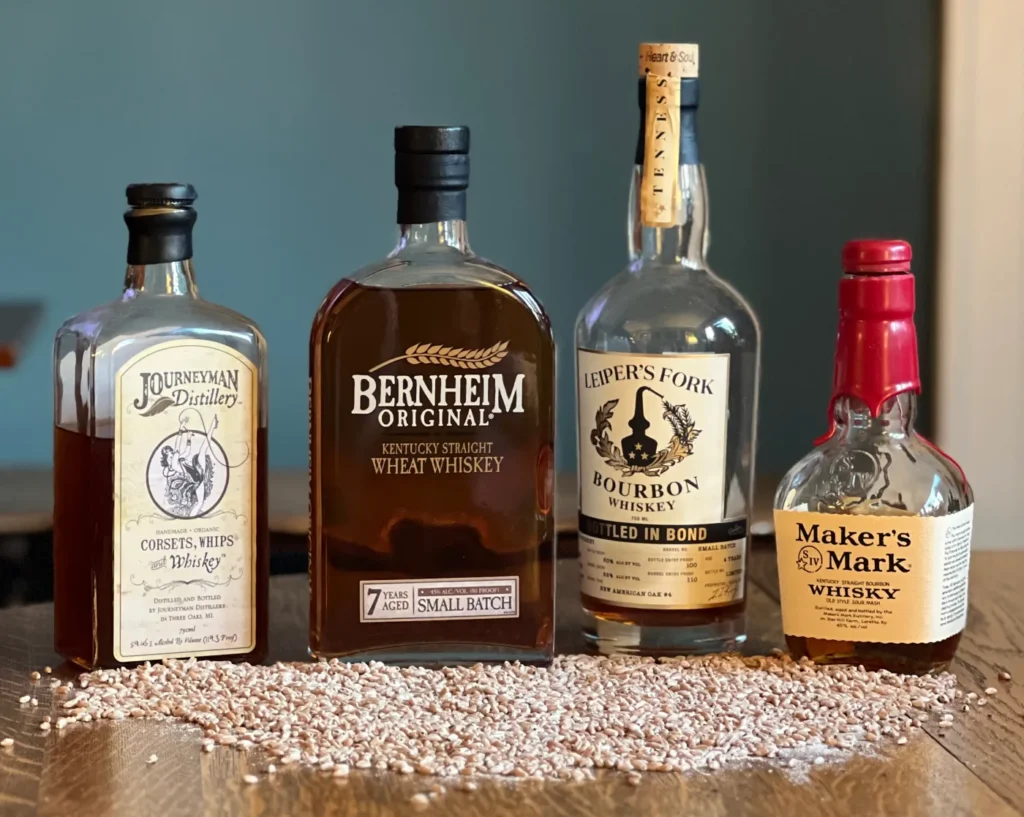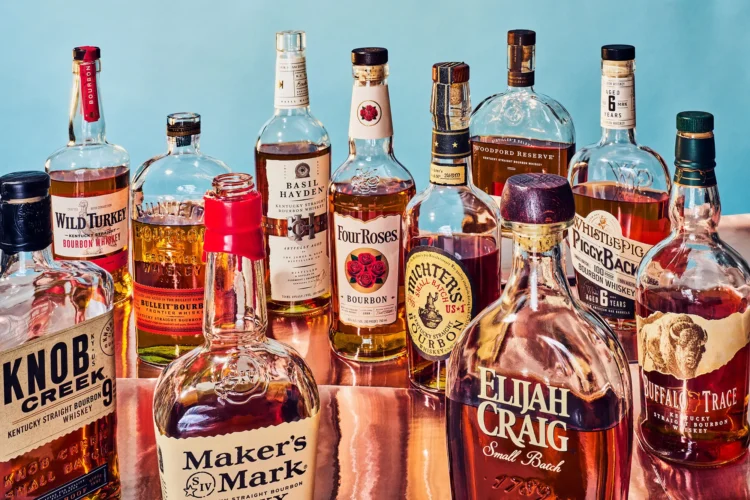Bourbon is one of the most popular and distinctive types of whiskey in the world. While it shares some common characteristics with other whiskies, such as Scotch and Irish whiskey, there are key factors that make bourbon unique. From its geographical origin to the specific regulations that define its production, bourbon stands out not only in its flavor profile but also in its production process and the laws governing its creation. In this article, we will explore the key differences that set bourbon apart from Scotch and Irish whiskey, and dive into the specific ingredients and regulations that define bourbon’s taste and character.
Exploring the Key Differences that Set Bourbon Apart from Scotch and Irish Whiskey
At first glance, bourbon, Scotch, and Irish whiskey may all seem similar in many respects. They are all distilled spirits made from fermented grains, aged in barrels, and have rich histories. However, there are several crucial distinctions that set bourbon apart from Scotch and Irish whiskey. These differences can be attributed to a combination of ingredients, geographical factors, production methods, and legal regulations.
The Origin of Bourbon
Bourbon is often associated with the United States, and more specifically, with Kentucky, where much of it is produced today. While it is possible to make bourbon anywhere in the U.S., the name “bourbon” itself is tied to the state of Kentucky, though it was first distilled in the late 18th century. To qualify as bourbon, whiskey must be produced in the United States and meet specific legal requirements. This is a critical factor that distinguishes bourbon from Scotch and Irish whiskey.
Scotch, on the other hand, must be produced in Scotland, and Irish whiskey must come from Ireland. Each of these countries has its own traditions and regulations governing whiskey production. The geographical origin of these whiskies plays an important role in shaping their characteristics. For example, Scotch whiskey is often associated with peaty, smoky flavors due to the use of peat during the malting process, while Irish whiskey tends to have a smoother, lighter flavor profile due to the triple distillation process that is commonly used.
The Grains Used in Bourbon
One of the defining characteristics of bourbon is the specific grain bill used in its production. Bourbon must be made from a mash that is at least 51% corn. This high corn content contributes to the rich, sweet flavors that are characteristic of bourbon. The remainder of the mash typically consists of other grains such as rye, barley, and wheat, each of which influences the flavor profile.
In contrast, Scotch whiskey is typically made from malted barley, and its grain bill often consists entirely of barley (in the case of single malt Scotch), although blended Scotch can include other grains. Irish whiskey is also often made with malted barley, but there are also variations that include a mix of grains, including corn, barley, and wheat. The grain bill used in bourbon plays a crucial role in creating its distinctive sweet, rich, and full-bodied flavor profile, which is one of the main factors that set it apart from other whiskies.
The Distillation Process
While the distillation process for bourbon, Scotch, and Irish whiskey follows similar basic principles, there are significant differences in how each is distilled. Bourbon is typically distilled in pot stills or column stills, though the use of column stills is more common in bourbon production due to the efficiency of the process. The spirit is distilled to a high proof, usually around 160 proof (80% alcohol by volume), but it must be distilled to no higher than 160 proof to legally be classified as bourbon. This results in a rich, full-bodied whiskey that retains much of the character of its ingredients.
Scotch whiskey is generally distilled in pot stills, which gives it a more traditional, artisanal feel. The process is usually slower and more labor-intensive, and Scotch whiskey is often distilled twice (though some distilleries use a triple distillation method). The distillation process in Ireland is similar to Scotch, though Irish whiskey is often triple-distilled, which contributes to its smooth and light flavor.
The Aging Process
Bourbon must be aged in new, charred oak barrels, a requirement that distinguishes it from Scotch and Irish whiskey. The use of new barrels gives bourbon its signature caramel, vanilla, and oak flavors, as the whiskey interacts with the charred wood during aging. This is one of the reasons why bourbon has such a rich, smooth flavor profile compared to other whiskies. The aging process for bourbon must last at least two years to be classified as straight bourbon, though many bourbons are aged for much longer to achieve optimal flavor development.
Scotch and Irish whiskeys, by contrast, are usually aged in used barrels, which have previously held other liquids such as sherry, wine, or bourbon itself. The reuse of barrels contributes to the more subtle and complex flavors found in Scotch and Irish whiskey. Scotch whiskey is typically aged for a minimum of three years, while Irish whiskey is often aged for a minimum of three to five years.

The Specific Ingredients and Regulations that Define Bourbon’s Taste and Character
The unique flavor profile and character of bourbon are defined by a combination of ingredients, regulations, and production methods that set it apart from other types of whiskey. Several key factors determine what makes bourbon truly unique, and the following regulations are essential in ensuring that a whiskey qualifies as bourbon.
1. The Mash Bill (51% Corn)
As mentioned earlier, one of the defining ingredients of bourbon is the grain bill, which must contain at least 51% corn. This high proportion of corn gives bourbon its characteristic sweetness and richness. The remaining 49% of the mash can include a mix of other grains such as rye, wheat, or barley. The choice of secondary grains significantly impacts the flavor profile of the bourbon:
- Rye Bourbon: When rye is used as the secondary grain (along with the 51% corn), it produces a spicier, more peppery flavor, which is often described as bold and assertive.
- Wheat Bourbon: If wheat is used, the bourbon has a softer, smoother, and slightly sweeter profile. This type of bourbon is often described as mellow or gentle.
- Barley Bourbon: Barley is occasionally used in bourbon, often to add a malty or nutty flavor.
2. Distillation Proof and Aging Proof
Bourbon must be distilled to no more than 160 proof (80% alcohol by volume) and must enter the barrel for aging at no more than 125 proof (62.5% alcohol by volume). This regulation ensures that bourbon retains much of its original character, and that it is not over-distilled, which could strip away flavor. Additionally, the whiskey must be aged in new, charred oak barrels, which imparts significant flavor during the aging process.
3. Bottling and Labeling
Bourbon must be bottled at no less than 80 proof (40% alcohol by volume) to qualify as bourbon. Additionally, to be labeled as “straight bourbon,” the whiskey must be aged for a minimum of two years. If it is aged for less than four years, the label must include an age statement. There are also different categories of bourbon, such as “small batch” and “single barrel,” which refer to the methods of production and bottling.
4. No Additives
Bourbon is strictly regulated to ensure that it is made without the use of artificial flavorings, colorings, or additives. This is one of the key differentiators from some other spirits, ensuring that the flavor profile of bourbon is entirely natural, shaped by the grains, distillation process, and interaction with the oak barrels.
Conclusion
Bourbon’s unique character comes from a blend of specific regulations, ingredients, and traditional production methods that set it apart from other whiskey types like Scotch and Irish whiskey. From its distinct grain bill (at least 51% corn) to the requirement for aging in new, charred oak barrels, bourbon has a flavor profile that is rich, smooth, and full-bodied. While it shares similarities with other whiskies, it is the combination of ingredients, distillation, and aging regulations that make bourbon a truly distinctive and celebrated whiskey in its own right.































